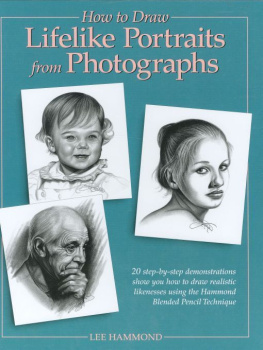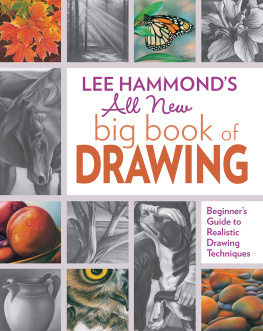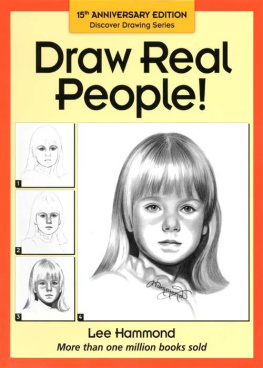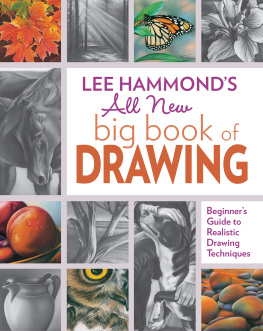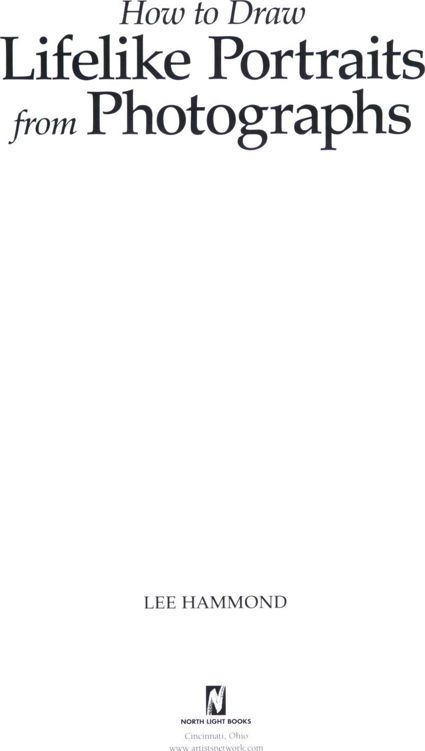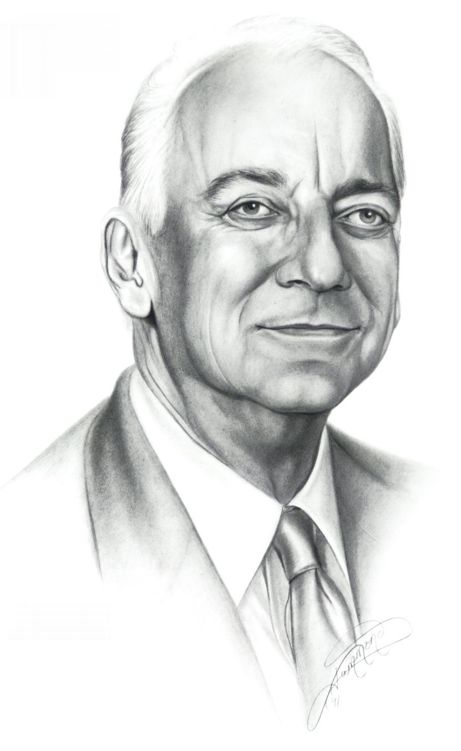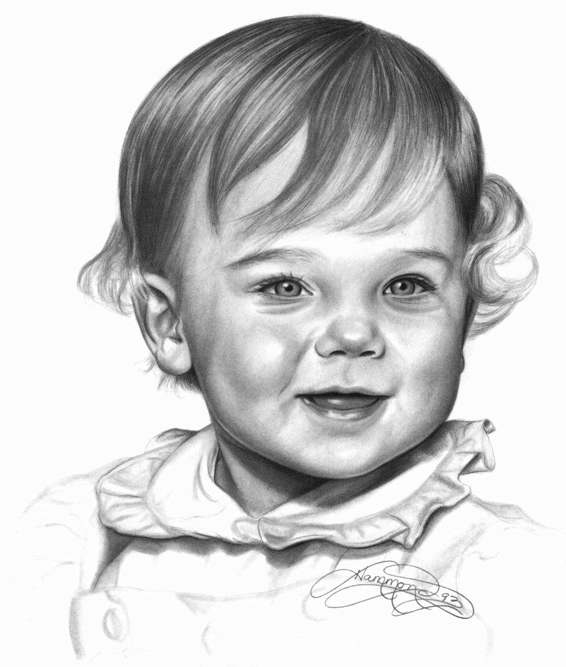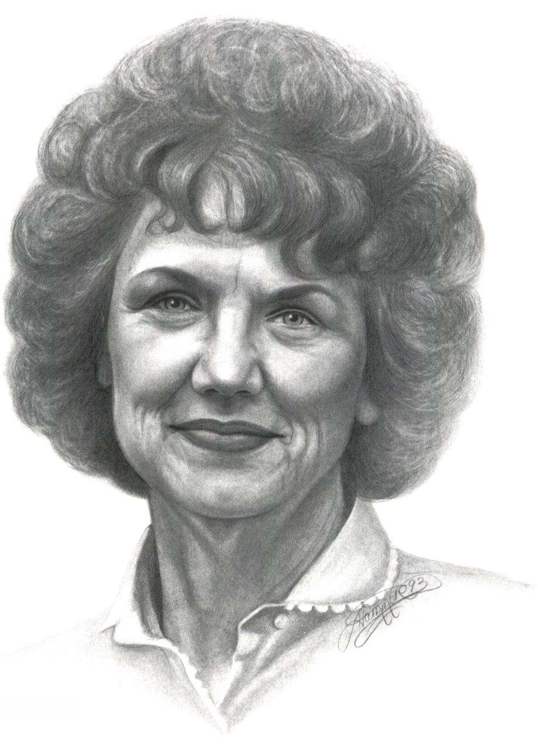Table of Contents
About the Author
Polly (Lee) Hammond is a Kansas City-based illustrator who specializes in portraiture. Her expertise in the art field includes everything from detailed, pictorial billboard illustration, technical illustration, fine art drawing and painting, to complete commercial art studio experience. Portraiture will always be her main focus.
Lee attended the University of Nebraska and has worked as a Police Composite Artist for both Kansas and Nebraska. She has been certified through NAMTA (National Art Materials Trade Association).
She now resides in Overland Park, Kansas, where she maintains her own business, Hammond Illustration and Art Instruction. She has a full teaching schedule and is very busy with a commissioned portrait and illustration service.
Lee is the mother of three children, Shelly, LeAnne and Christopher.
How to Draw Lifelike Portraits from Photographs. Copyright 1995 by Lee Hammond. Manufactured in China. All rights reserved. No part of this book may be reproduced in any form or by any electronic or mechanical means including information storage and retrieval systems without permission in writing from the publisher, except by a reviewer, who may quote brief passages in a review. Published by North Light Books, an imprint of F&W Publications, Inc., 4700 East Galbraith Road, Cincinnati, Ohio 45236. 1-800-289-0963. First edition.
This hardcover edition of How to Draw Lifelike Portraits from Photographs features a self-jacket that eliminates the need for a separate dust jacket. It provides sturdy protection for your book while it saves paper, trees and energy.
Other fine North Light Books are available from your local bookstore or direct from the publisher.
07 06 05 15 14
Library of Congress Cataloging-in-Publication Data
Hammond, Lee
How to draw lifelike portraits from photographs / Lee Hammond.
p. cm.
ISBN 0-89134-635-X
1. Portrait drawingTechnique. 2. Pencil drawingTechnique. 3. Drawing from
photographs. 1. Title.
NC773.H28 1995
743,42dc20 94-48193
CIP
Edited by Kathy Kipp
Designed by Brian Roeth
Cover illustration by Lee Hammond
Thanks to each artist for permission to use artwork.
All work presented in this book has been rendered in graphite, on two-ply bristol, unless otherwise stated.
To my dad, who I miss very much, but whose presence I will always feel.
Dad
In memory of William D. Hagen, Sr. Graphite on smooth two-ply bristol 14
Acknowledgments
The successful completion of this book, and the essence within it, truly belongs to the wonderful students that I have had the honor of teaching throughout the past fifteen years. Without their undying support, encouragement, enthusiasm and friendship, this book would surely have remained just a dream for me.
I thank all of them from the bottom of my heart for their help and patience as I pieced all of this together. But most of all, I thank them for the wealth of information that they always provided me through their questions as I helped them pursue their love of art. Im sure they will never know just how much they have taught me too.
A huge thank-you must also be directed to my wonderful family (and favorite subjects), especially my fantastic children. I realize that living with an artist is not an easy thing to do, and we have had plenty of difficult times. I will learn to live with the idea that their memories of me will probably be that of my back, as I faced my drawing table or typewriter, day after day and year after year. I hope they will know in their hearts how much they have always been loved.
Finally, I would like to express my gratitude to the incredible people at North Light Books, who made me feel so much at home and like part of the gang. A nicer group of people to work with, Im sure, could not be found. Thanks so much for your help and support, and most of all, your friendship.
Shellys First Portrait
Graphite on smooth two-ply bristol 14
Introduction
Like most artists, I have been drawing since childhood. I followed the same artistic steps as every child, from stick people to exaggerated features of my family and friends. As I progressed in age, my attempts at drawing became more of a challenge since I was no longer satisfied with the normal progression of my renderings. I wanted to draw like my grown-up sister, who is an exceptionally gifted artist to this day. School projects seemed too general for me, and their insistence on creative expression, impressionism or abstraction, although interesting to me as concepts, did not suit my natural artistic desire. That desire was to capture people and objects realistically on my paper. That need was not met through the many years of schooling, art classes and workshops that I put myself through. So began the long, hard process of teaching myself.
Over the years, my artwork finally began to take the shape that I wanted it to, and I began to sell my work and to teach the very technique that I had developed. This book is the combined information that I have accumulated through years of teaching and being taught. Many of the issues addressed are actual questions raised by my students. It is a book that can instruct the self-learner or one that can be used in a classroom situation. This is the very book that I wish had been available to me when I was learning!
To get the most out of it, take this book step-by-step, in the order in which it is presented, whether you are a beginner or advanced. I promise you will see results not only in the way you draw, but also in the way you see things. Practice, and lots of it, will be the key to your success. The lessons within, combined with your desire, will lead you to some of the best drawing you have ever done.
Mom
Graphite on two-ply bristol 14
CHAPTER ONE
You Can Do It! Heres Proof
A good portrait is the product of many important elements. The artist must have a good understanding of the subject matter, a keen eye for details and the effects of lighting, and the ability to put it all down on paper with the illusion of realism.
The portrait on the facing page shows what can be done with an ordinary snapshot out of the family photo album. After the successful completion of this book, you too, will be able to capture your memories in the form of beautifully drawn, realistic-looking portraits.
On the following pages are some drawings I have collected from my students. In each set, the first example shows how the student was drawing before taking my classes, and is typical of how most people draw at the beginning stages of their artistic development.
When looking at a students beginning work, youll notice certain characteristics that are common to everyones beginning attempts. First, the student takes a simplistic approach when drawing the face and the hair. There is usually an extreme overuse of hard lines, without smooth transitions in tone. This creates a harsh, outlined look. Second, theres an overall lack of understanding of the facial features.

